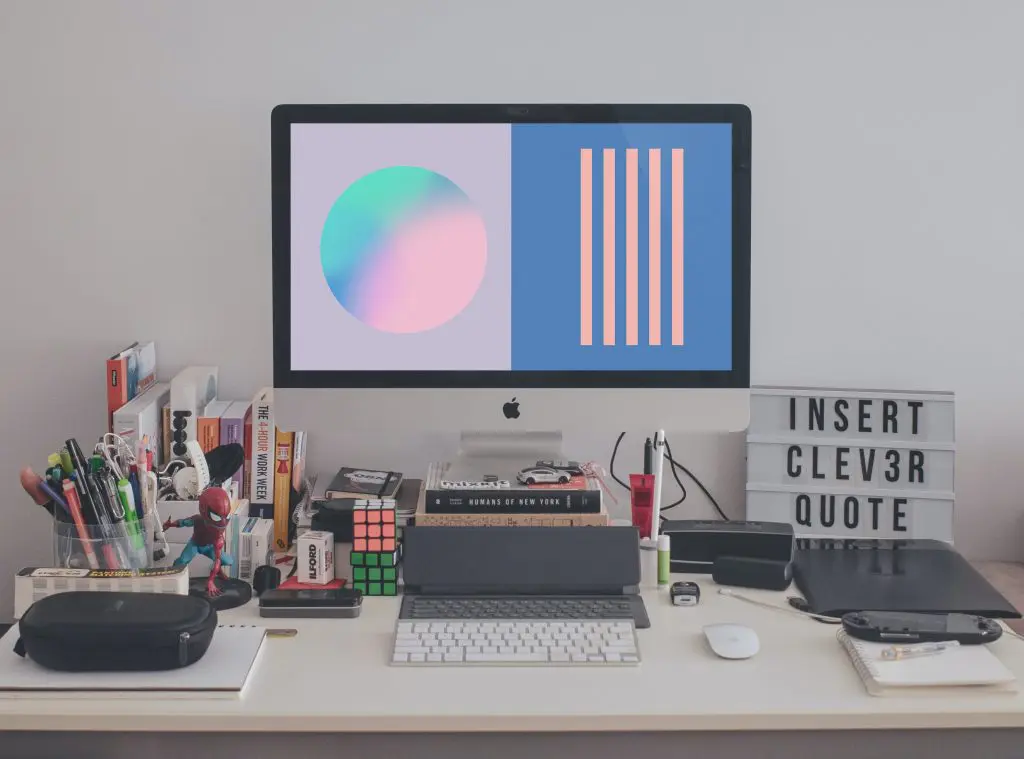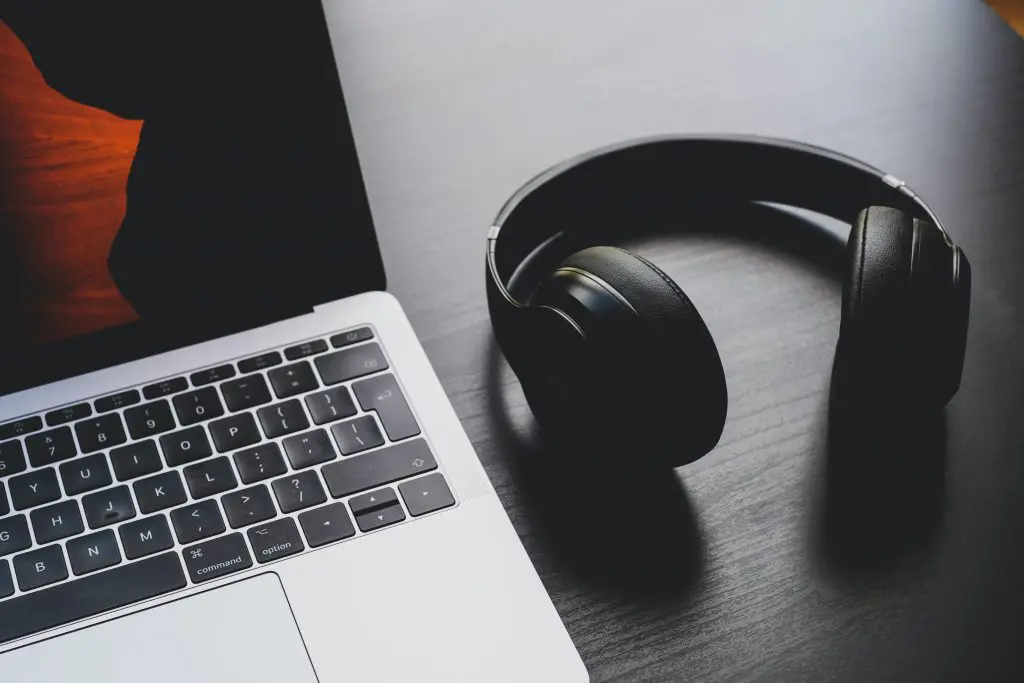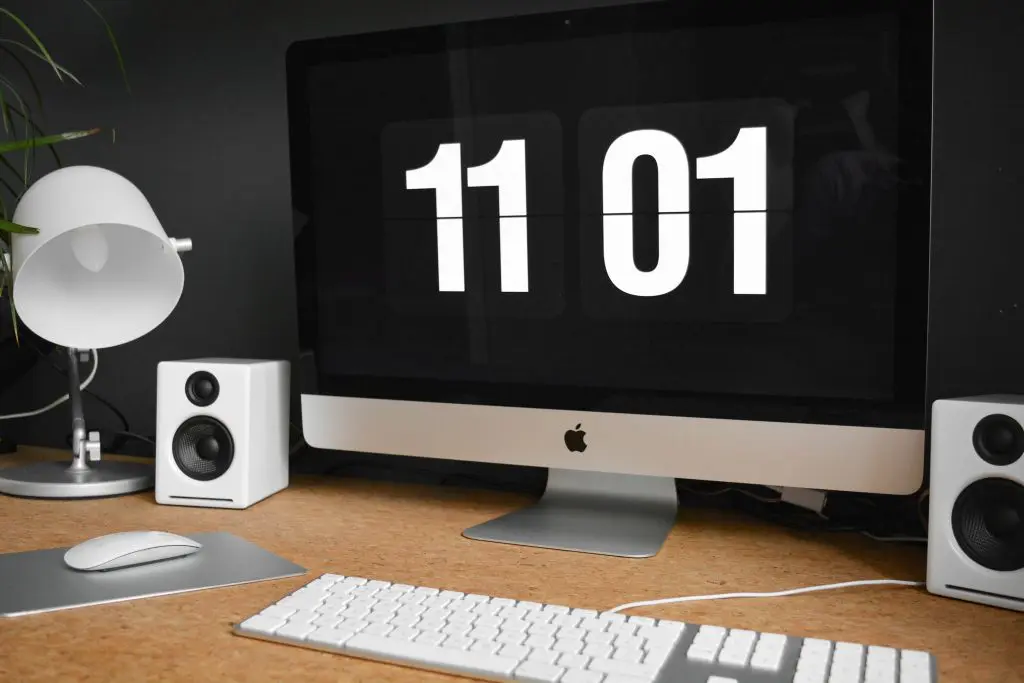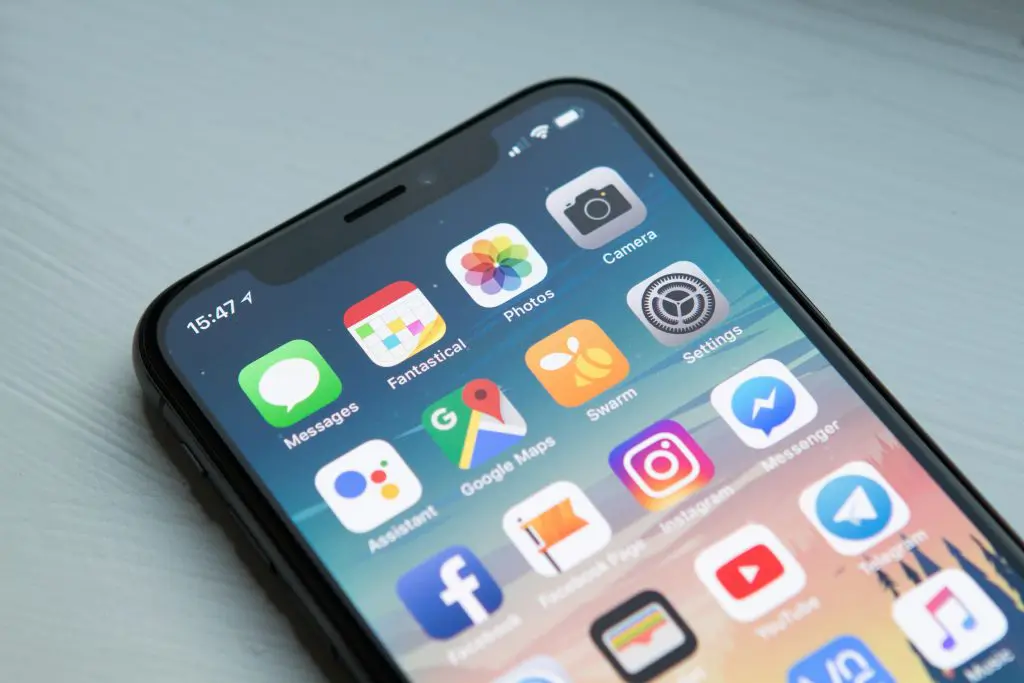Does this scenario sound familiar? You’re new to working from home, and you’re excited. You can wake up later, sleep later, be your own boss, control your own schedule. But what’s this?
Suddenly, the sun has set and you’ve barely gotten any work done because home is where your distractions are. Or you’ve worked too hard, not trusted yourself, skipped lunch, and not afforded yourself a break. Welcome to the world of working from home.

When you work from home, whether that is as a freelance writer or a company employee, you feel like you have all the time in the world, but that perspective slowly shifts to feeling like time just doesn’t work the same anymore.
There isn’t enough of it, or you can’t control it. Work-life balance is no longer possible when work and life share the same space.
A terrifying truth is that the stress that your boss and colleagues often provide can prove to be far less damaging and scary than the stress you put upon yourself when trying to manage your own time effectively.
Working from Home Tips
So, let’s take a deep breath and look at how to manage your time properly; how to work from home efficiently. We’ll start with a few tips that will work for anyone, regardless of their approach to work.
Then we’ll move on to some tricks and life hacks for working from home that will restore your faith in yourself and grant you a healthy work-life balance.
Tip 1: Lay Your Work Out Clearly

It’s vital that you know, at the start of each day, what you need to accomplish. You need to be able to see what work needs doing and how long it will take. But it goes deeper than this.
Look at the kind of work you have to manage and complete, and put a rough estimate on how long each task will take. For example, if one task is to reply to an email, a second is to fill in a spreadsheet, and a third is the main task, such as (depending on your job) writing an article, conducting a Skype interview, or doing detailed internet research.
The email is going to take ten minutes; the spreadsheet may take 20-30 mins; the main task could be 2-3 hours. Put as fine an estimate as possible on each task, and then prioritise them based on which is most urgent, which is more stressful or exhausting, or which is easiest.
Once you’ve got all your tasks laid out, and you have a rough idea of the time you need in order to complete them all, then turn all of this into a schedule for the day. Make sure to factor in breaks and lunch. It’s okay to take a short break after completing a short task and to cut a 2-hour task into two one-hour segments with a ten-minute break in the middle.
How you do this is up to you. It might be with Google Calendar, notes on your phone, post-its, or even a hand-drawn chart. The important thing is that you don’t keep it all in your head. Get it down on paper, physically or digitally. This helps more than you’ll ever know.
Tip 2: Consider Your Workspace

Your home is now your office. This can be a surprisingly dangerous situation for people who are working from home. It’s important to be able to compartmentalise your life, even if you never leave the house. You can do this physically, by allotting yourself a workspace and a living space.
For those who have the money and the space to do so, turning a room in your home into an office is a fantastic move. If you don’t have the money for that, make whatever arrangements you can to physically separate work and play.
This might mean buying a desk to put in the corner of your living room. It might simply mean working at the dining table and eating lunch in front of the TV.
However you do it is up to you, but you need to build physical barriers between work and life. These physical barriers translate to mental ones as you begin to associate one place with work and another with relaxation and play.
You need to build physical barriers between work and life.
This may require money that you might not have right now, or use space that you can’t find, but you need to interpret this in your own way. Make use of the space you have, even if that means having a desk in the corner next to your sofa in your studio apartment. The desk is for work and the sofa is for play. Make sure people can see you by getting your lighting for virtual conferences sorted.
Read More: Get Started With Virtual Coworking – What is it and Is it Right for You?
Tip 3: Look After Your Body
There can be some guilt that comes with working from home. You feel privileged, surrounded by your home comforts and no longer having to struggle through a morning commute. You’re also not outside in the wind, rain, and cold, or the baking summer heat. You’re comfortable.
The reality, however, is that you’ll soon notice muscle and back pain issues that weren’t present in your old commuter life. Being stationary comes with its own set of issues. A commute is a kind of morning exercise, and it forms healthy physical habits that are now absent from your life.
Being hunched over a computer all day is vicious. We have friends who are tattoo artists; they complain ad nauseam about fiery pain in their backs because of the hunched-over position they sit in all day. The same goes for us who are working from home.
So, before you sit down to work, make sure you stretch your back and arm muscles. And during work, during those allotted breaks we’ve talked about, do a few more stretches. Take a stroll around the room. Pop outside. Complete a quick household task like washing the dishes. Do something that uses other muscles, preferably those in your legs. Speaking of your legs…
Read More: 10 Best Digital Nomad Jobs for Beginners
Tip 4: Prioritise Exercise
It’s surprisingly easy to get fat and lazy when you work from home. It’s also easy to feel like exercise is a luxury you didn’t have when you commuted to work, so why should you be allowed to do so now at 9 am when you’d normally be getting to the office?
The point is: you must prioritise exercising when working from home. You can do this in one of three ways:
- Exercise before you begin your work, as soon as you wake up, as a way to sharpen your mind.
- Exercise once all your day’s work is done, as a great way to cool off and get rid off excess energy.
- Exercise during a mid-day break. Take an hour off to go for a jog or lift weights at home, take a shower, then get back to work feeling physically and mentally refreshed.
However you do it is up to you, but just make sure you don’t skimp on exercise. It’s good for your body, your mental health, your focus levels, your digestion etc. These are all factors that can be negatively impacted when working from home. So take care of your body and your mind by prioritising exercise.
Read More: Great Habits for your Body and Mind You Can Try Right Now
Tip 5: Pick Your Music Carefully

Working without any background music can be off-putting, and will definitely lead to you distracting yourself. Don’t be afraid of playing music while you’re working from home; just be savvy about it.
Music keeps you in the zone, provided it’s the right kind of music. It can also be such an awful distraction that it ruins a whole morning’s worth of work. You need to find the right music for your own productivity, and make that music work for you.
First off, whatever your music taste is, you should lean towards instrumental music. Orchestral music is the absolute winner here. Classical pieces or movie soundtracks work so well.
If you’re into jazz, there’s enough instrumental choice out there to spoil you. If you like heavy metal, go again for instrumental bands. Black metal works well since it has a droning quality and lyrics that are incomprehensible.
Lyrics are what distract us. If you know the words, you’ll sing along, even if it’s just in your head. And that is bad for your focus and productivity. If there’s no instrumental music you like, consider listening to music with vocals in a language you don’t understand. It’s less distracting.
There’s also something to be said for mood. Music puts us in a very personal headspace, so pick your music carefully. Something soothing works well. Find your focus music.
Tip 6: Understand When You Work Best

Working from home means managing your own schedule. And while Tip 1 still stands, it can also be combined with this tip: understand when you work best.
Now that you work from home, you may now get to decide when you want to work. But that’s not really up to you; it’s up to your body and your brain chemistry. We are all on a spectrum between ‘early bird’ and ‘night owl’, and you have to find that sweet spot — that eight-ish hour gap — when your mind is at its sharpest and you are most happy to get your work done.
Do not try to control your own body clock. Do not let your old forced rhythms, decided by company policies, dictate your work-from-home schedule. Listen to your body and work when it works best.
What’s important is that you don’t try to decide, that you don’t fight your body. You need to understand your body, not control it. It’ll take a week or two of working from home to finally get there, but you’ll soon feel it.
If you need to wake up at 7, do some household chores or play video games until noon, then work from noon to 8 pm, you do that! If you want to sleep till noon, work through the afternoon and evening, then play until the early hours, that’s grand! And if you are an early bird who wants to wake up at 5 am and get their work done by noon, awesome!
It all comes down to you working with your brain and your body to produce the best results.
Read More: What is Virtual Coworking and Is It For You?
Tip 7: Reward Yourself
I’ve mentioned the importance of breaks, but use these breaks as time for a reward. Having something to look forward to while you’re working is a major motivator. When you work under someone else, the things you look forward to are lunch breaks and the drive home. But, right now, you are home, so you need to decide on your own rewards.
Your reward might be a cookie, a fresh cup of coffee, one chapter of a book, a few minutes of texting friends and checking social media. It’s up to you. As long as it doesn’t take too long and is something that won’t snowball and distract you from your work. Something that gives you a break from typing but also reinvigorates you to continue working.
When you’ve decided on your next reward, give yourself time enough to get your work done, and that work will speed by while you happily look forward to that reward.
Working from Home Tricks
With the tips out of the way, let’s move on to some working from home tricks that can help you with your focus level and your productivity. When we say ‘tricks’, we mean apps and websites for productivity.
These are all apps that serve as life hacks for productivity that can help those of us who work from home but struggle with personal discipline (which, honestly, is most of us).

Best for your to-do list: Trello
We mentioned back in Tip 1 that organising yourself is imperative. A great app for this, especially if you work from home but as part of a team, is Trello.
Trello is a website and a phone app, meaning you can access it easily from any device (it’s on the App Store and Google Play Store). Trello is a card-based app that allows you to turn your ideas, notes, and important information into cards which can then be placed on boards and calendars. These cards can be written on, renamed, and moved around at your leisure.
There really isn’t a better site or app for managing your time, scheduling, and creating a to-do list that is either just for you or for your team.
Best for time-tracking: Focus List
Focus List is an app that ties beautifully with Trello. While Trello can be used as a calendar that spreads across days, weeks, and months, Focus List is about each individual day. As the app itself says, “FocusList is a daily planner & focus app based on Pomodoro technique. It helps you plan your day, stay focused and track your time”.
Remember when we said that it’s important to roughly plot out how long each task will take to complete? Focus List allows you to put that information in and build a tangible plan for your day ahead. You can use the app each morning to build your day out of tasks as though it were Lego.
Once you have your tasks for the day written in, as well as how long each one takes, Focus List turns those into a series of timers for extra motivation. You need ten minutes to compose and send that email? Set it in and go! You can even time your breaks to keep you laser-focused on your day and kept to a pitch-perfect schedule.
Best for keeping off social media: Forest and Offtime
There are two ways to help you stay focused on your work and away from distractions like social media or whatever your procrastination of choice might be. The first is positive reinforcement, and the second is by building up harsh barriers.
For the first, there’s Forest. Now, Forest is flat-out fantastic. It’s an app that allows you to plant a seed when you begin your work. The seed will grow and grow into a full tree for as long as you stay on the app and maintain focus on your work. Come off the app, and your tree with start to wither and die.
You set yourself a timer for how long you need to be focused, and the app encourages you to stay there and grow your tree. Beautiful. To make things even better, the team who designed Forest have partnered with a charity that plant real trees to make the Earth a better place to live.
As for laying down strict barriers for yourself, there’s Offtime. This is an app specifically for those of us distracted more by social media and our phones than by anything else.
Offtime puts a timed block on your phone which disables social media and eliminates the temptation to check your phone every five minutes. You can easily turn it into a game of pride and competition with friends and colleagues by sharing your time with friends to show how focused you have been lately.
Offtime is great for working from home but it also encourages you to steer clear from your phone while you’re watching a movie or out with friends. Set your block for the duration of the meal and enjoy a dinner out with your family or your friends. For some, this might not seem necessary. For others, it is, and it works.
Best for communication: Slack and Discord
If you’re someone who works from home but you’re still an employee, then having an app that allows for easy communication is vital. And if you’re someone who works freelance, like us, these apps are still going to be necessary for certain jobs. Slack and Discord are both communication apps that work similarly. I use both for two different long-term freelancing jobs.
Slack is exactly what you think it is: a web app and phone app that allows for long-distance communication. You sign in and connect with specific people (managers, colleagues etc) in both private chats and group channels.
You can build a channel and invite multiple people for brainstorming and group discussion. The app can stay open and you’ll get pop-up messages whenever someone is trying to reach you.
As for Discord, you might know it if you’re a gamer. It is, primarily, for gamers, after all. Discord works very similarly to Slack, as a private place to host private or group chats.
Discord doesn’t actually have to have anything to do with gaming, but what separates it from Slack is its ability to use voice chat as well as typing. If you want to enjoy a chaotic voice chat with colleagues from all over the place, you can. Simply set up a group chat and enjoy.
Both of these apps work well with Trello, where you can work together with your team to discuss and schedule work for one another to complete.
Read More:
What to do When a Client won’t Pay You?


